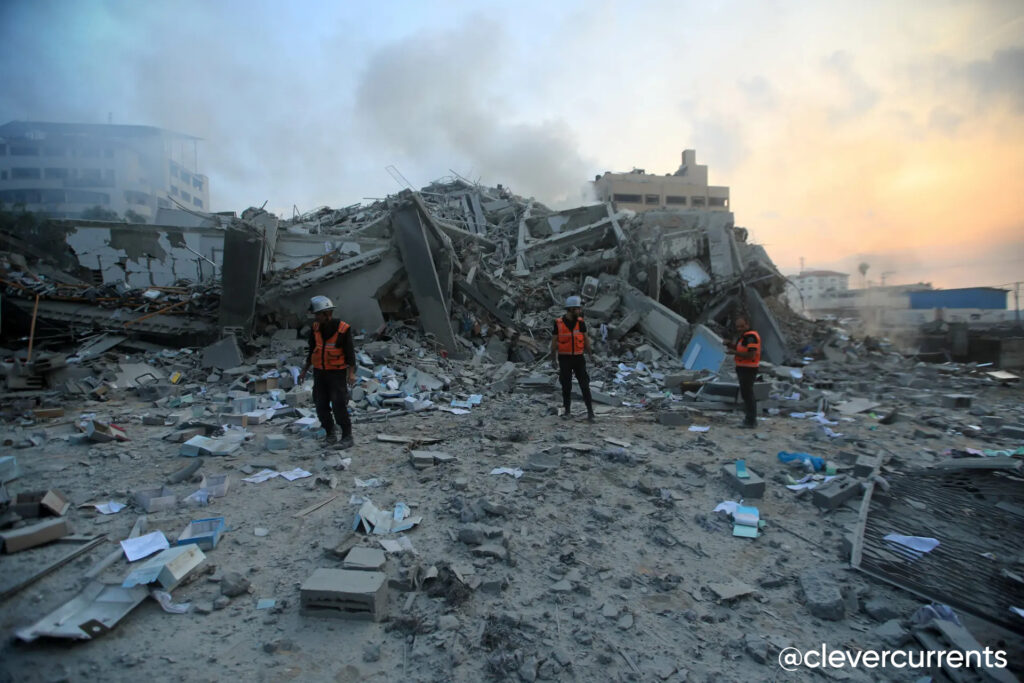A sharp escalation has unfolded in the Israel–Gaza conflict. Israel’s Defence Minister, Israel Katz, declared that “Gaza is burning” following heavy overnight strikes targeting Gaza City — the largest and one of the most densely populated urban centers in the Gaza Strip.
Here’s what we know so far, the implications, and why this moment is particularly dangerous — and urgent.
What’s Happening Now
-
Intensified Bombardment & Ground Movements
Israeli airstrikes have increased in intensity, especially overnight, focused on Gaza City and its neighborhoods. There are reports of Israeli tanks pushing into parts of Gaza, signaling a possible ground offensive. Civilians are fleeing south toward zones deemed somewhat safer. -
International Diplomacy: A Narrow Window
U.S. Secretary of State Marco Rubio, among others, has warned that time for a diplomatic deal is shrinking. There are ongoing discussions in Doha involving Qatar, which has often acted as mediator. Rubio’s message: the opportunity for ceasefire or a hostage deal may only last days, perhaps a few weeks. -
High Civilian Toll, Growing Humanitarian Crisis
The reports from Gaza describe casualties, destruction of homes, displacement, and overwhelming strain on medical facilities. Shifa Hospital has received bodies and wounded from bomb blasts. Many civilians are trapped, unable to leave targeted zones, with limited access to aid. -
Official Rhetoric & Objectives
Israel Katz has reaffirmed that Israel will not relent “until the mission is complete.” The government’s stated goals include dismantling Hamas infrastructure and securing the release of hostages.
Key Questions & Concerns
-
How will civilians fare?
With bombardment escalating, many noncombatants are at grave risk. Evacuation paths are limited, and communications are disrupted. The question of whether warnings to civilians are sufficient or possible in every affected area is urgent. -
What is acceptable under International Law?
The laws of armed conflict mandate protection of civilians, proportionality, and distinction between military targets and civilian infrastructure. Some UN and human rights experts are raising concerns that certain tactics may cross legal or moral lines. -
What happens if diplomacy fails?
If no ceasefire or hostage deal materializes in the narrow window described, all indications suggest a further escalation — which risks greater loss of life, more displacement, and further breakdown of humanitarian access. -
Regional spillover
Violence in Gaza and rhetoric like “Gaza is burning” risk inflaming tensions across bordering states, and among communities globally. It could also affect other theatres (Lebanon, Syria) depending on how neighboring actors respond.
Why This Feels Different (and Worse)
-
Desperation & Prolongation
This isn’t a sudden flare-up; it’s an escalation of a conflict that has gone on for almost two years, with prior ceasefires, ruptures, and rising humanitarian cost. The pressure to do “something decisive” grows, but so does the risk for civilians trapped in what’s already a humanitarian crisis. -
Narratives & Messaging
When leaders use language like “burning,” “complete mission,” “burnishing infrastructure,” it signals that the conflict is moving not just in kinetic terms, but as a battle of perception, legitimacy, and future governance. It affects how aid agencies, neighboring countries, and global public opinion will respond. -
Human cost is mounting
Beyond immediate deaths and injuries, long-term impacts are devastating — disruption of health services, sanitation, food and water access, mental health, displacement, and damage to homes, schools, and culture. Gaza was already fragile; this intensification compounds vulnerabilities.
What Needs to Happen (What We Should Demand or Push For)
-
Immediate humanitarian access: Aid workers, medical supplies, water, food, fuel — these must reach civilians without impediment. Strict protection of hospitals, ambulances, shelters.
-
Transparent Accountability: Independent monitoring of civilian casualties, rigorous investigations of any alleged violations of international law.
-
Ceasefire & Hostage Negotiation: Efforts to pause the fighting, protect civilians, and secure release of hostages are urgently needed. The few days/weeks window Rubio refers to should be used.
-
Diplomatic pressure: Global leaders, international organizations should push both sides — Israel to avoid indiscriminate harm, Hamas too to adhere to agreements, release hostages, stop using protected sites.
-
Media & Civil Society Attention: Witnessing, reporting, amplifying voices of civilians in Gaza; ensuring not just images of destruction, but their stories, coping, resisting each day.
Reflection: What Does “Gaza Is Burning” Mean?
That phrase, beyond its literal sense, is symbolic of:
-
Lives destroyed, homes razed.
-
A place where hope is under threat.
-
The burning of futures — children who might not finish school, families who may not rebuild.
It’s a phrase meant to shock. And it must do more than shock — it must move us to action, solidarity, accountability.

